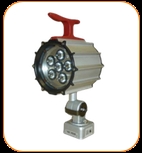 Add My Company
Add My Company
Sign In

Modern LEDs are available across the visible, ultraviolet, and infrared wavelengths, with very high brightness.LED or Light-emitting Diode is a two-lead semiconductor light source. An LED is often small in area (less than 1 mm2) and integrated optical components may be used to shape its radiation pattern.Whilst the earliest LEDs emitted low-intensity infrared light they were often used as indicator lamps for electronic devices, replacing small incandescent bulbs. They were soon packaged into numeric readouts in the form of seven-segment displays and were commonly seen in digital clocks.Modern LEDs are available across the visible, ultraviolet, and infrared wavelengths, with very high brightness. Recent developments in LEDs permit them to be used in environmental and task lighting. LEDs have many advantages over incandescent light sources including lower energy consumption, longer lifetime, improved physical robustness, smaller size, and faster switching.LEDs are now powerful enough for room lighting, although remain more expensive, and require more precise current and heat management, than compact fluorescent lamp sources of comparable output.LED lamps are used for both general and special-purpose lighting. Where colored light is needed, LEDs that inherently emit light of a single color require no energy-absorbing filters. White-light LED lamps have longer life expectancy and higher efficiency (more light for the same electricity) than most other lighting when used at the proper temperature.CCEAWestelettricTechmalux
For more information on LED - Light-emitting Diode Lamps In Leeds talk to Task Lighting
Enquire Now
List your company on FindTheNeedle.

